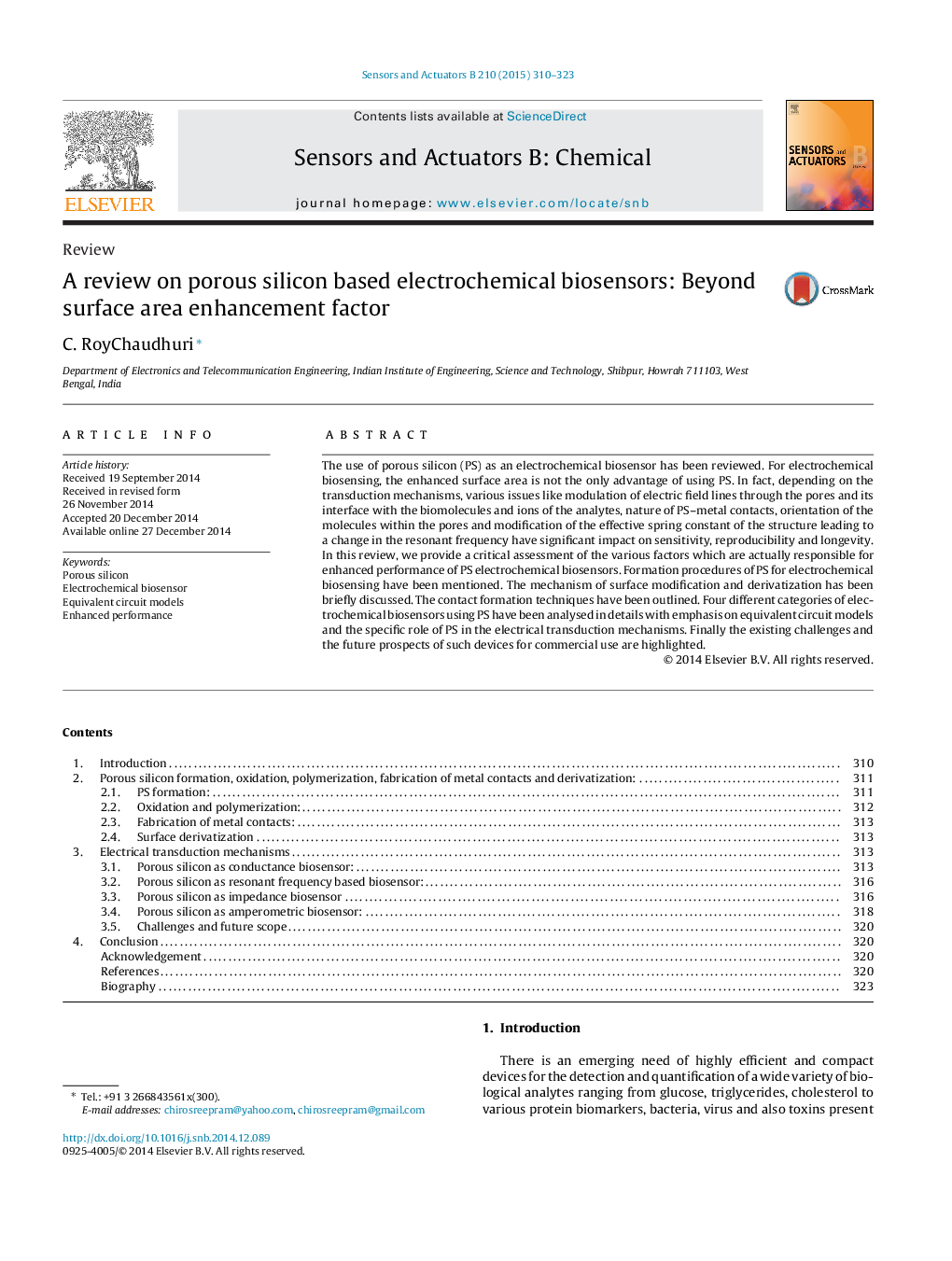| Article ID | Journal | Published Year | Pages | File Type |
|---|---|---|---|---|
| 741884 | Sensors and Actuators B: Chemical | 2015 | 14 Pages |
The use of porous silicon (PS) as an electrochemical biosensor has been reviewed. For electrochemical biosensing, the enhanced surface area is not the only advantage of using PS. In fact, depending on the transduction mechanisms, various issues like modulation of electric field lines through the pores and its interface with the biomolecules and ions of the analytes, nature of PS–metal contacts, orientation of the molecules within the pores and modification of the effective spring constant of the structure leading to a change in the resonant frequency have significant impact on sensitivity, reproducibility and longevity. In this review, we provide a critical assessment of the various factors which are actually responsible for enhanced performance of PS electrochemical biosensors. Formation procedures of PS for electrochemical biosensing have been mentioned. The mechanism of surface modification and derivatization has been briefly discussed. The contact formation techniques have been outlined. Four different categories of electrochemical biosensors using PS have been analysed in details with emphasis on equivalent circuit models and the specific role of PS in the electrical transduction mechanisms. Finally the existing challenges and the future prospects of such devices for commercial use are highlighted.
